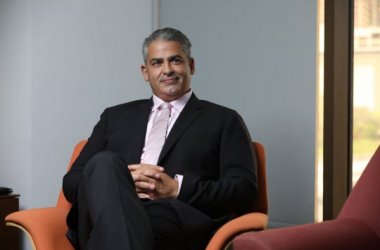
Positioned in Gartner’s leader quadrant, Infosys? product division, Finacle, has reengineered its products to enable customer centric changes
Ten years ago, global software and outsourcing company Infosys, created its banking software products division called Finacle. With 36% of its current annual revenue of six billion dollars coming out of financial services, the company has considerable penetration into key global financial accounts and has leveraged from these relationships. The fine line between products and services in this market segment implies there is a convergence of relationships and either side can facilitate the entry of the other.
However while open space for financial services is much wider, Finacle is more focussed around retail core banking and its associated components. Over a period of ten years, Finacle’s products have become increasingly dominant on the global scene and today Finacle appears in Gartner’s leader quadrant of international retail core banking vendors. Other players in the same quadrant include TCS, Oracle, SAP, Misys, Polaris Software and others.
“At the start of the century our effort was to knock on the doors and get a request for proposal. Today I believe we have crossed that stage,” reflects Sanat Rao, Finacle’s Global head of business development and alliances based out of London. “The Finacle brand is so well known that when a bank puts out a request for proposal it comes to us automatically. This was not the case five to seven years ago.”
Finacle previously used a network of regional sales partners to get the first step into the doors of potential customers. Today the sales partners have become elevated to more of an implementation and support role rather than sales. The primary customer support centre is based out of Sharjah, UAE and the regional installed customer base covers Oman, Turkey, UAE, Saudi Arabia and Egypt.
Across the last ten years the complete dynamics of retail banking has changed. Banks can no longer wait for customers to arrive at their door step and complete their transactions in the traditional manner. Internet and mobile banking are a key delivery component for high value customer transactions and this enablement is usually built around the core banking application that sits at the centre of any bank’s business model.
Migrating towards a more modern and versatile core banking application offered by vendors from Gartner’s leader quadrant is a high cost and high risk operation. But today, Gartner adds the benefit of high reward to this migration process, since it kick-starts a bank’s ability to move away from traditional retail banking channels to more dynamic ones.
Change of the back end is seen as the starting point for a variety of other changes. “Bringing in other solutions to support new banking channels leading to convergence at the front end becomes a lot easier,” says Rao. And also helps satisfy a business owner’s continuous quest: “How can I leverage all the information that I have access to.”
While today’s core banking applications may be more versatile, another part of the success resides in the ownership of such business transformation projects. According to Rao, there is much deeper top management involvement in today’s transformation projects than five years before. “Other than IT, CEOs themselves sit on the steering project committees.” While the CIO may be responsible for the execution, the owner of such projects is usually the owner of the bank’s internal business.
On a broad canvas, the difference between two business transformation projects in the area of retail banking would be the degree of business involvement driving the change in either. “In some banks you see much stronger involvement of business, while in other banks the involvement may not be as strong.”
For Finacle which started off in the core banking area ten years ago, its primary revenue still remains its core banking product. However to align itself with the needs of the market it also offers internet and mobile banking as standalone components for banks that do not want to go down the core banking transformation route. “Core banking is a mission critical application. It is a big decision for the bank.” And not all banks may want to migrate away from their core banking applications as a precondition to kick-off a business transformation initiative.
So while five years ago, almost every Finacle project involved the core banking application, which would lead to product roll outs in other areas, today there are an increasing number of component only projects. “If you got core banking you got the other solutions,” was the older game plan according to Rao. Today Finacle has customers in the Middle East, South Africa, UK and the US who have implemented mobile banking as standalone on top of their core banking applications.
“We are putting a lot of emphasis on selling mobile banking independently. Of course we will try to cross sell it along with core banking, but we are not constrained by it,” says Rao.
Componentisation of the core banking application or back office is also one of the qualifying conditions for a vendor to be present in Gartner’s leader quadrant. All vendors in this quadrant have such a strategy and a road map to make them available.
This portfolio of banking solutions, usually built around the core banking application in standalone fashion, focussed on delivering strong business benefits represent the current outlook of vendors leading in this space. “New generation technology providers like us, pretty much address the entire footprint. Every bank may not take all of it but the technology is available today, which was not the case in the past,” summarises Rao.
The closer involvement of IT and business in banks has lead to better appreciation of change on systems, interoperability of multiple systems and the need for coexistence. This contrasts with the older approach of developing and implementing applications in isolation leading to huge number of independent solutions and a complex operating environment.
While Finacle maintains an end to end product portfolio for its retail banking customers, it also leverages on supporting solutions from other vendors. “There will be areas where we will not have a solution and where we may consciously not have a solution. But we would have picked partners from the market who have a product offering which complements what we have to offer.” These are the complementary solution partners.
Are there any challenges for the product vendor in the days ahead? Its mobile banking product is device agnostic and supports 7,500 devices today. The sheer pace of technology changes in this area may keep the vendor a step behind. The other area is lack of partner network development, which may curtail the ability of the vendor to scale and deploy its solutions at multiple customer sites at the same time.
Unlike other mission critical global product vendors like SAP and Oracle, Finacle is yet to incorporate the need for such partners in its business model. As per Gartner, lack of certified partner networks may prompt banks in the future, to increase their due diligence of vendors at the time of final assessment.
===========================
Finacle regional partner network
– Maskati Commercial Services, Bahrain
– Wareef United, Saudi Arabia
– Bawan Cybertek, Oman
– Egabi Solutions, Egypt
===========================
Finacle complementary solution partners
– Comviva: Alerts
– Surya: Asset liability management
– Newgen: Document management
– Suntec: Dynamic and relationship pricing
– RSA: Fraud detection
– FRS Global: Regulatory reporting and compliance
– Jasper Soft: Reporting infrastructure
– Accel Frontline: Reporting infrastructure
===========================
Finacle customer portfolio
– Al Hilal Bank, UAE
– Emirates NBD, UAE
– National Bank of Umm-al-Qaiwain, UAE
– Rakbank, UAE
– Arab National Bank, Saudi Arabia
– National Commercial Bank, Saudi Arabia
– Bank Dhofar, Oman
– Bank Sohar, Oman
– Turkland Bank, Turkey
– Bank of Alexandria, Egypt
(Partial list)
===========================





